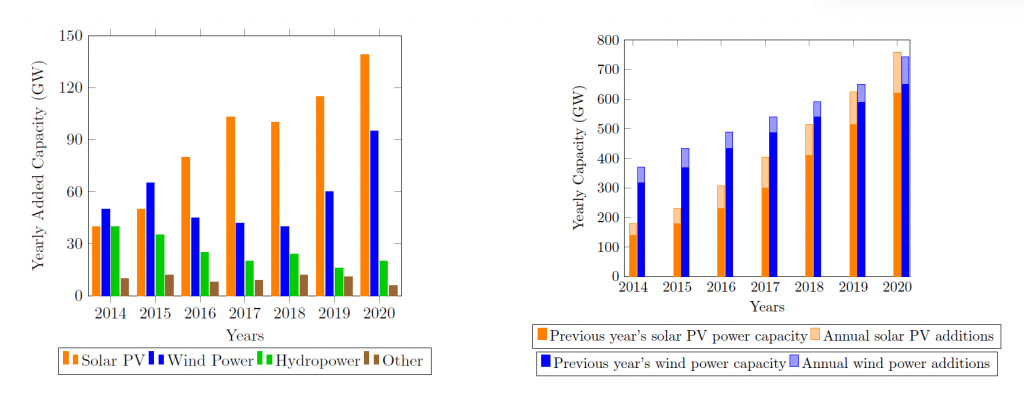Historically, the strength and stability of an electrical power grid depended on the number of synchronous generators (SGs) connected to that grid. However, as traditional SG-based electrical power sources are replaced with converter-tied renewable energy sources (RESs), electrical power grids may become unstable following a grid disturbance.
In the 2015 Paris Agreement, 192 countries pledged to substantially reduce their greenhouse gas emissions to limit the rise in the average global temperature to below 2 degrees Celsius in this century. To reach this target, countries globally have agreed that the world’s reliance on traditional fossil fuel-based electrical power generation must be reduced, replaced, or supplemented with RESs.
In the dissertation discussed here, Dr Dillan Ockhuis, under supervision of Professor Marius Kamper both of the Department of Electrical and Electronic Engineering, proposes that slip synchronous wind turbine systems (SS-WTSs) be used to assist with grid stability by providing grid strength, inertia and reactive power compensation in areas with a high concentration of converter-tied RESs.

Background
An SS-WTS drivetrain fundamentally consists of a slip-permanent magnetic coupler (S-PMC) and a directly grid-tied SG, i.e., without a power converter. However, the literature regarding the design and modelling of the SG and S-PMC units in SS-WTSs for grid-tied applications is insufficient. First, the designed SGs typically have low synchronous reactance values. This means that their performance is highly susceptible to grid voltage variations.
Secondly, the generators designed for SS-WTSs are not grid code compliant and are thus ineligible for large-scale grid-connected applications. Thirdly, the methods used to model and analyse the S-PMC unit can yield inaccurate results when predicting the maximum torque of the S-PMC, which can jeopardise the stability of the SS-WTS.
Finally, there are concerns regarding the added mass and cost of the S-PMC unit. In this dissertation, optimal impedance matching for grid-tied SGs is investigated. It is found that a synchronous reactance of 0.5 per unit yields the best grid-connected performance. Furthermore, a rotor hybrid-excited design methodology for grid-tied synchronous generators is proposed and evaluated.
Accurate finite-element (FE) analysis shows that the proposed hybrid-excitation method ensures that the grid-tied generator has variable flux and hence variable reactive power compensation capabilities to comply with modern grid codes. Measured results from a novel 15 kW hybrid-excited SG verify the generator’s FE results and grid code compliance.

Aims and Objectives of this Research
This study aims to design and develop grid-tied and grid-compliant SSGs to provide grid strength, inertia and other grid-supporting services. To fulfil these aims, the objectives of this study include the following:
- Reviewing the relevant literature on SS-WTSs to assess its advantages and disadvantages concerning providing grid services.
- Developing modelling and analysis frameworks for designing grid code-compliant slip synchronous generators.
- Verify (to the degree possible) the developed modelling and analysis frameworks using measured results from built 15 kW S-PMC and SG prototypes.
- Investigating and comparing geared SS-WTSs with medium- and low-speed S-PMCs at a utility-scale power rating on a drivetrain cost-per-kW basis.
- Develop and investigate the dynamic stability of geared SS-WTSs during grid fault conditions.
Final Thoughts
This dissertation used the FE-based, frozen permeability method to accurately determine the modelling parameters and performance characteristics of the S-PMC over its entire operating range. The measured results from an S-PMC prototype validate the FE analysis results.
Furthermore, a study comparing medium- and low-speed S-PMCs at a 3 MW power rating indicates that the medium-speed S-PMC has a significantly lower cost-per-kW and active mass than the low-speed S-PMC. Thus, S-PMCs in high-speed SS-WTSs should be considered to reduce the overall mass and cost of the SS-WTSs.
You can read the full research at https://scholar.sun.ac.za/server/api/core/bitstreams/de92b254-47ac-4db5-a0e2-91d3df4ea740/content





